 
(Pensive garden opposite S. Stimmate di S. Francesco)
|
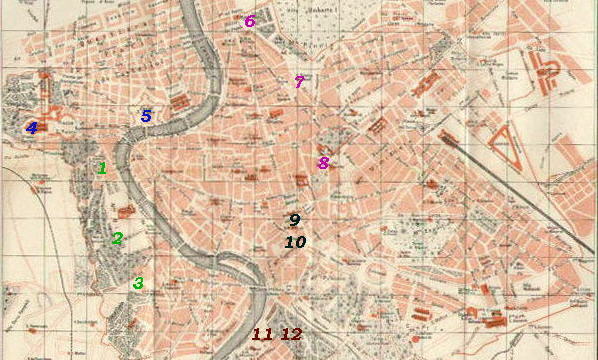 | ||
1 - S. Onofrio; 2 - Piazzale del Gianicolo; 3 - Acqua Paola; 4 - Dome of St. Peter's; 5 - Castel Sant'Angelo; 6 - Terrazza del Pincio; 7 - Terrazza di Trinitą dei Monti; 8 - Piazza del Quirinale; 9 - Terrazze del Monumento a Vittorio Emanuele II; 10 - Terrazze Caffarelli; 11 - Giardino degli Aranci (Rocca Savella); 12 - Roseto di Roma
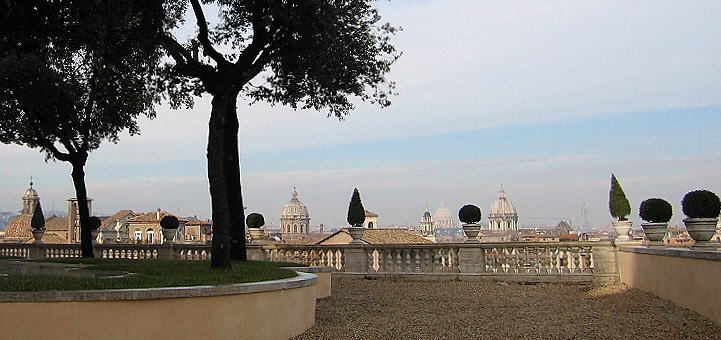 | ||
The signature of the 2004 European Constitution in the Palazzi Capitolini had the indirect effect of accelerating the reopening of a nice terrace which offers a striking view over most of the domes of Rome.
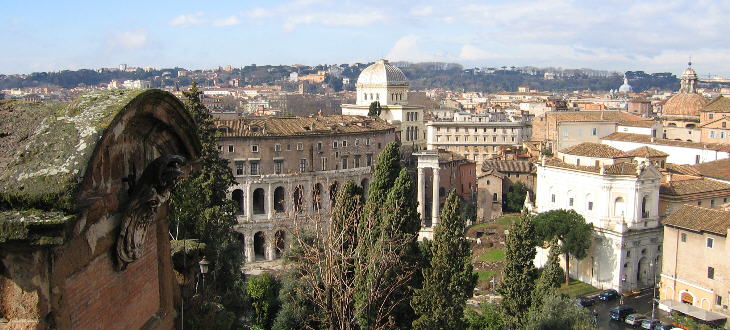 | ||
The museum hosted in the two twin palaces of Piazza del Campidoglio was recently expanded to include the adjoining Palazzo Caffarelli and its terrace is now part of the museum cafeteria.
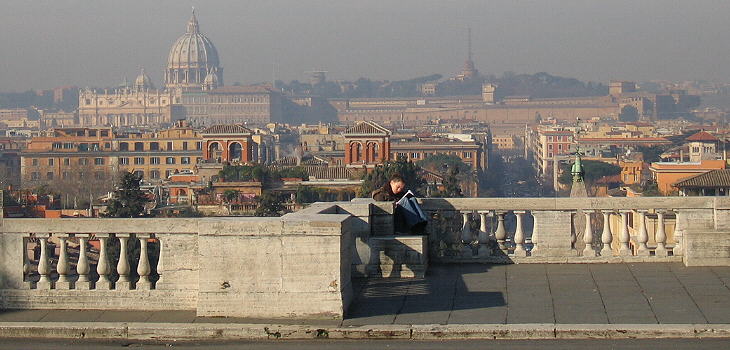 | ||
The first public gardens were designed at the beginning of the XIXth centuries by the French authorities and they were completed by Pope Pius VII; they included a wide terrace overlooking Piazza del Popolo (the image shows the tip of its obelisk) and with the an excellent view of the Vatican.
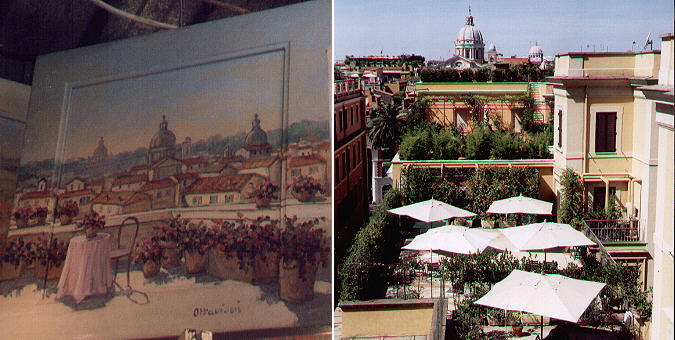 | ||
The wealthiest families very often had a private terrace in the form of a loggia from which they could enjoy a view over Rome. This facility adds a lot to the value of the house especially for those who entertain a great deal, either because they like it or because it is required by their job.
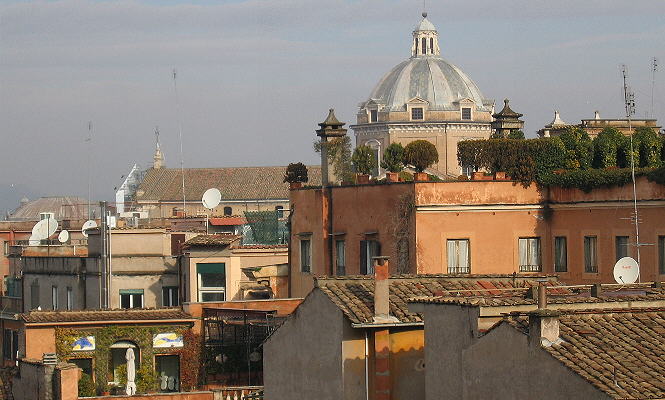 | ||
In 1870 Rome became the capital of the Kingdom of Italy and in a matter of few years its population doubled. To accommodate the newcomers the owners of historical palaces were allowed to build an additional storey slightly smaller than the existing ones and in part hidden by the cornice or by the projecting roof. In many cases the owners took the occasion for providing the new apartments with terraces, which often were turned into small hanging gardens.
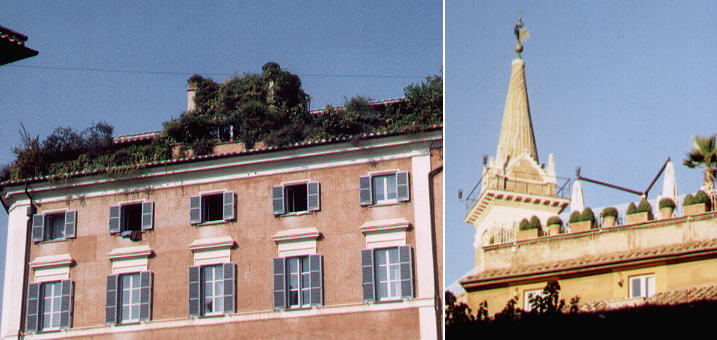 | ||
Other pages of this section:
The Domes of Rome
The Loggias of Rome
The Little Madonnas of Rome
The Pines of Rome
Golden Mosaics in Rome
The Talking Statues of Rome
A Roman Bestiary (the animals of Rome)
 or to
The Coats of Arms of the Popes or
to My Home Page on Baroque Rome or to
My Home Page on Rome in the footsteps of an XVIIIth century traveller
or to
The Coats of Arms of the Popes or
to My Home Page on Baroque Rome or to
My Home Page on Rome in the footsteps of an XVIIIth century traveller
All images © 1999 - 2005 by Roberto Piperno. Write to romapip@quipo.it
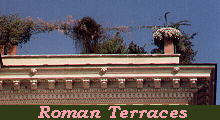 Roman Terraces
Roman Terraces